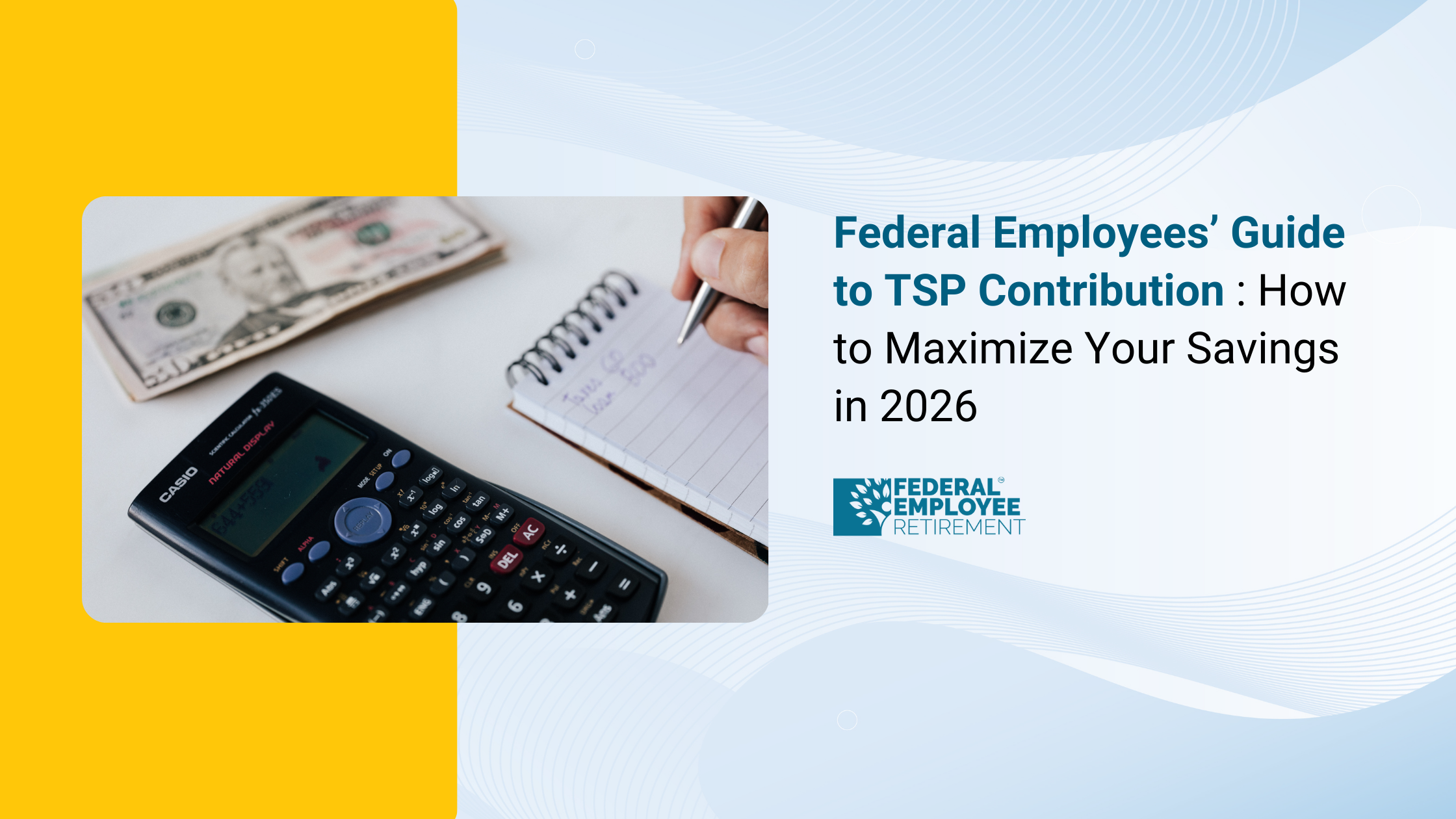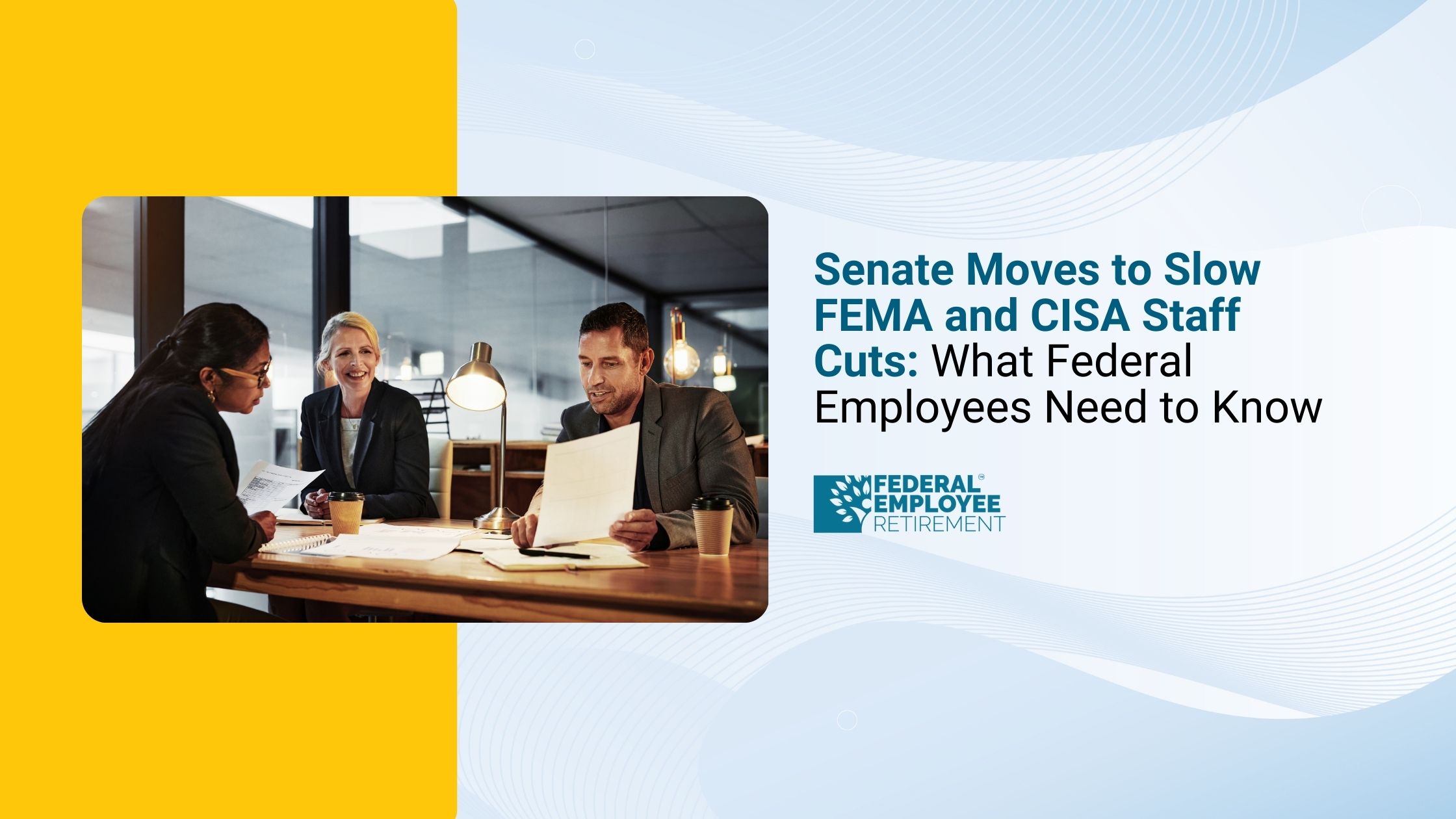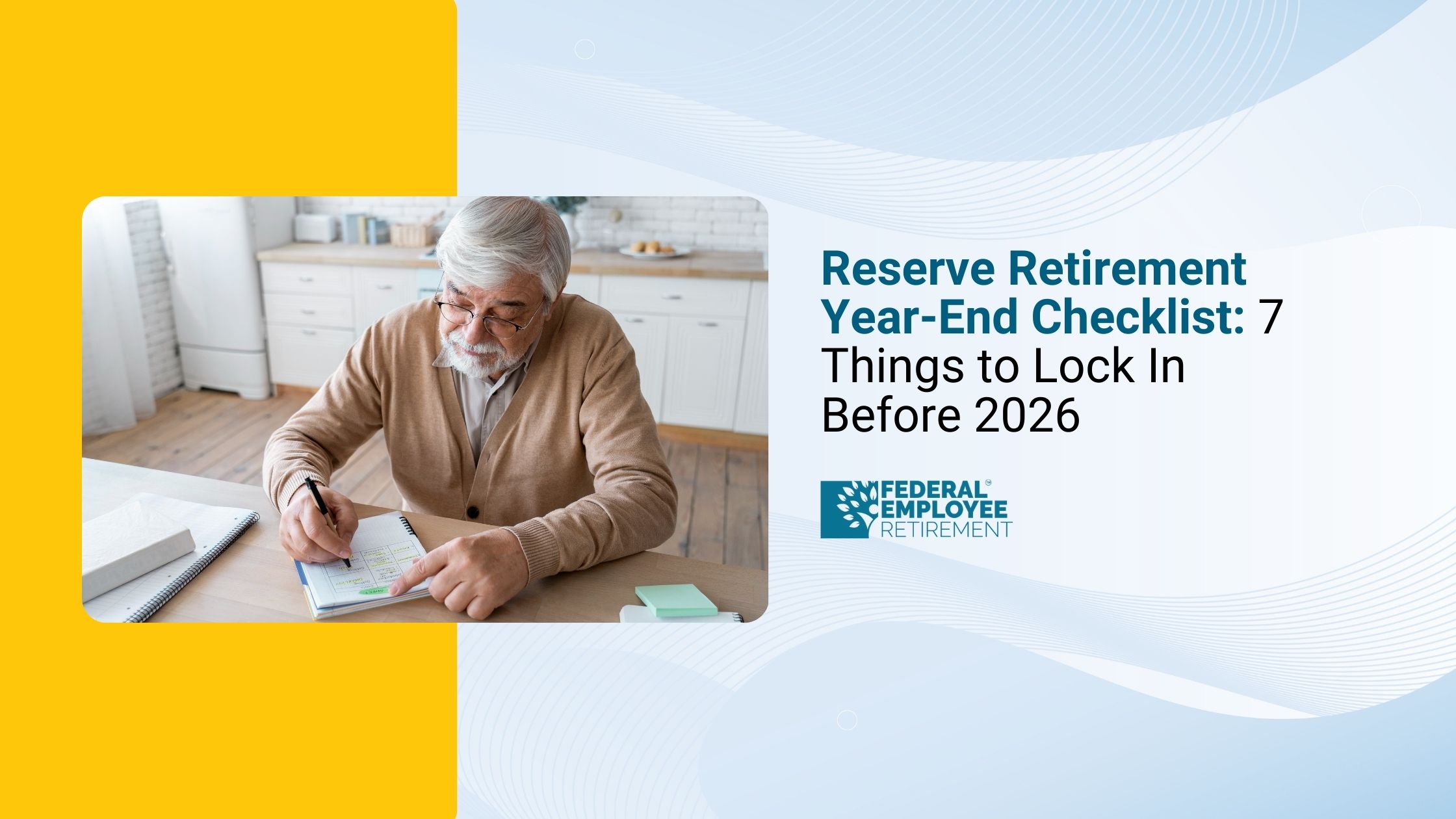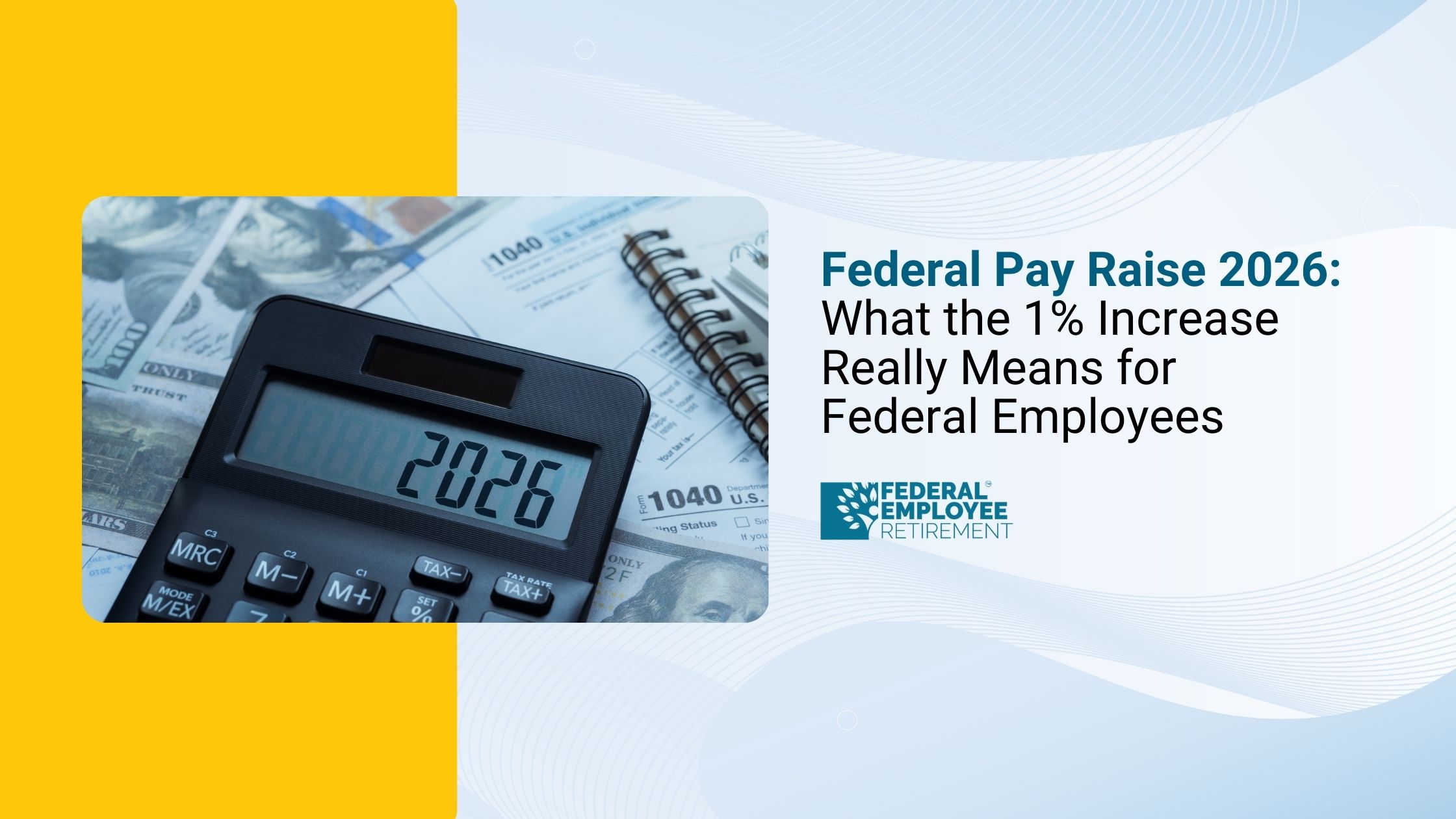You’re not alone; 4,359 federal employees booked their free review.

How to Calculate Federal Employee Retirement: A Step-by-Step Guide
For federal employees, retirement isn't just about leaving the workforce it's about maximizing benefits you've earned through years of service. Whether you're nearing your Minimum Retirement Age (MRA) or planning long-term, understanding how to calculate your FERS pension can make a huge difference in your retirement income.
This guide walks you through the entire FERS retirement formula, eligibility rules, and optimization strategies. We'll cover:
- The FERS formula in detail
- Eligibility requirements
- Real-life calculation examples
- How unused sick leave, military time, and survivor benefits affect your pension
- Key differences for early retirement, disability retirement, and more
Let’s get started with the basics.
1. What Is FERS?
FERS (Federal Employees Retirement System) is the retirement system covering most federal workers hired after 1983. It is structured around three components:
- Basic Benefit (Pension) – A defined benefit pension based on salary and service.
- Social Security – Standard eligibility begins at age 62.
- Thrift Savings Plan (TSP) – A 401(k)-style plan with agency matching.
This guide focuses on the Basic Benefit your FERS pension and how to maximize it.
2. The FERS Pension Formula: How It Works
At the heart of calculating your FERS retirement is this formula:
FERS Pension = High-3 Salary × Creditable Service Years × Pension Multiplier
a. High-3 Average Salary
Your "High-3" is the average of your highest-paid 36 consecutive months. It includes:
- Base pay
- Locality pay
- Shift differentials
Excludes:
- Overtime
- Bonuses
- Awards
b. Creditable Service
Creditable service includes:
- All years in retirement-covered federal service
- Military service (if bought back)
- Unused sick leave (converted at retirement)
- Part-time service (adjusted for actual time worked)
You can verify this using your Service Computation Date (SCD) on your SF-50.
c. Pension Multiplier
- 1%: If retiring before age 62 or with less than 20 years of service
- 1.1%: If retiring at age 62 or older with 20+ years of service
That small bump in percentage can increase your lifetime pension by tens of thousands of dollars.

3. Eligibility for Immediate Retirement
To receive an unreduced pension immediately, meet one of these combinations:
4. Real FERS Retirement Calculation Example
Example 1
- Age: 63
- High-3: $88,000
- Service: 28 years
- Multiplier: 1.1%
$88,000 × 28 × 1.1% = $27,104/year (~$2,259/month)
Example 2
- Age: 60
- High-3: $84,000
- Service: 22 years
- Multiplier: 1.0%
$84,000 × 22 × 1.0% = $18,480/year (~$1,540/month)
5. Boosting Your FERS Pension: Added Credits
a. Sick Leave
- 2,087 hours = 1 year of creditable service
- Added to service for pension calculations (not eligibility)
b. Military Buy-Back
- Buy back military time by paying ~3% of base pay plus interest
- Adds years to your creditable service
c. Survivor Benefits
- Options: 0%, 25%, or 50% survivor annuity
- Costs: 5%-10% reduction in your pension
d. FERS Supplement
- Paid to those who retire before 62 with immediate annuity
- Approx: $25-$40/month per year of FERS service
- Ends at age 62 or if earning too much income
e. COLA (Cost-of-Living Adjustments)
- Starts at age 62 for most FERS annuitants
- Early retirees and law enforcement/firefighters get COLA earlier
6. Special Situations & Pitfalls to Watch
- Part-time service: Reduces pension amount (pro-rated)
- LWOP (Leave Without Pay): Long periods may reduce service credit
- Deferred Retirement: Wait to claim pension later to avoid penalties
- Divorce: Court orders may award part of your pension to an ex-spouse
- Disability Retirement: Uses a different formula; age/service rules waived
- Early Out (VERA/VSIP): VERA VSIP Offers retirement options with fewer years under agency downsizing
7. TSP and Social Security: Completing the Retirement Triangle
- TSP: Fund your own savings, receive agency match. Options include monthly income, annuity purchase, or lump sum withdrawal.
- Social Security: Available at 62. Check statements online to estimate. If you paid into FERS, full Social Security applies (no WEP).

8. Tools & Resources
- Use our online FERS Retirement Calculator to estimate your pension
- Check your SF-50 and Leave and Earnings Statement (LES) for High-3 and SCD
- Consider a FERS-knowledgeable attorney for complex cases or disputed service time
- Attend OPM or agency-sponsored workshops to stay current
Final Thoughts
Knowing how to calculate your federal employee retirement is essential to making the most of your FERS pension. By understanding each element from the High-3 salary to military time buyback—you can plan a secure and confident retirement.
Pair your pension with TSP savings and Social Security benefits, and you’ll be in strong shape for retirement.
FERS Retirement FAQ
Do I get FERS and Social Security?
Yes. FERS employees pay into Social Security and receive benefits along with the FERS pension and TSP.
Are FERS pensions taxed?
Yes. Most of your FERS pension is taxable federal income. State tax treatment varies.
Can I retire at 57 with 20 years?
Yes, if your MRA is 57 and you choose MRA+10 retirement, but there may be a reduction unless you defer.
How is the FERS supplement calculated?
Estimate your Social Security at 62, divide by 40, then multiply by your years of FERS service.
Does unused sick leave count toward retirement eligibility?
No. It boosts your annuity but not your eligibility date.
Related Tags:
How to Calculate Federal Employee Pension ?
How to Calculate FERS Supplement in 2025


Get Updated
Subscribe to our weekly updates for the latest on retirement planning, federal benefits, exclusive webinars, and more!
Download Federal Retirement: Step-by-step Checklist
This comprehensive guide will help you understand your federal benefits, optimize your savings, and plan for a comfortable future.



.png)








